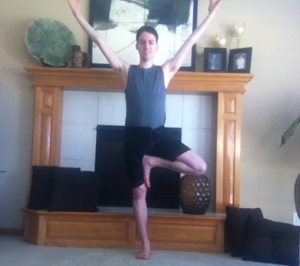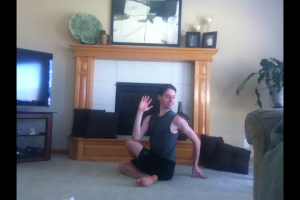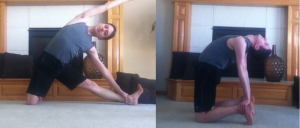Patterns in Nature and our Body Movement

“Energy moves in waves. Waves move in patterns. Patterns move in rhythms. A human being is just that: energy, waves, patterns. Nothing more, nothing less, a dance.
~Gabrielle Roth
Patterns are everywhere in nature, from our personal thought and behavior to weather patterns. The ancient Chinese Taoists had a word for the organic, intelligent patterns in nature: Li. They noted that there were no perfectly straight lines in the natural world, only wiggles. Rolling hills, meandering streams, spiral galaxies, and the human spine are made not of straight lines but of curves.
We can recognize patterns in our bodies to make our movement more structurally sound. In yoga, a fold or crease often signals a deviation from structural integrity. Every pose is a form of sacred geometry; here are just a few examples:
Cycles:
In nature, we see cycles in the seasons, the tides, and a 24-hour day. Likewise, our body is made up of rhythms and cycles (e.g. breath, heart, and brain waves). The free-flowing breath is the central motif that literally “breathes life” into any shape our body makes. The breath is primary, helping us find our own best version of any posture.
Cat’s breath — mimic the undulating flow of the breath by expanding on inhale and contracting on exhale.
Roots and Branching:
Plants have sturdy roots in the earth which allow for a graceful blossoming toward the sun. From the rooting pattern, we also see branching (e.g. trees, lightning, arteries, and veins).
In yoga, we want to yield to the earth with a wide base of support (often accomplished by spreading the hands and/or feet). Rather than slumping into the ground or pulling away, the aim should be balance.
Vrksasana (tree pose): rather than scrunching your toes and gripping the mat, spread them wide and root through all four corners.
Angles:
The triangle is the most sturdy structure in nature, and for this reason, it is used widely in architecture.
In upright standing poses, such as Virabhadrasana 2 (Warrior 2), maintain a right angle from the heel up to the knee and thigh. Similarly, keep the chin parallel to the earth in a right angle.
Spiral:
Water spins in whirlpools and hurricanes. On a more micro-level, our DNA forms a double helix.
Twisting poses, such as ardha matsyendrasana, create a spiral in the spine. Inhales elongate and exhales gently wind the body into a twist.
Circles (mandalas)/arcs:
The sun, moon, and earth are spherical.
Our body can also make a half-moon shape in sidebending poses and backbends such as parighasana (gate pose) and ustrasana (camel). As you arc, feel the oscillation of the breath gently expanding and contracting the spine.
What patterns can you recognize in your movement practice and throughout the day??




